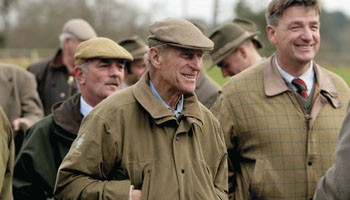Duke of Edinburgh voices concern for rural Britain

In this week’s 30 September issue of Shooting Times, HRH Prince Philip meets with Shooting Timescolumnist Robin Page to discuss the countryside, shooting, the UKs wildlife and changes to the environment and population affecting them.
Commenting on changes in the countryside, in the interview Prince Philip identifies population increase and rampant development as a contributory factor: Villages used to have to be more or less self sufficient. They had a butcher, a baker and a shoemaker. Now that has all gone because of the way retailing is concentrated in big centres and multi-stores.
It is not only the changing nature of populations that Prince Philip identifies; he is also concerned by the issue of population growth: I think that the greatest problem for the future is population growth. The population has quadrupled in my lifetime.
Discussing how this relates to environmental issues, he said: People go on about this carbon footprint, but they fail to realise that the amount of carbon going into the atmosphere is entirely dependent on the number of people living on the earth.
On farming and the economics and regulation of agriculture:
they are constantly trying to produce cattle that will produce more milk and less cow like a hat-rack with an udder attached to. They cant really go on making such a travesty of an animal. There must be a limit to this. Even more ridiculous is the fact that milk is actually cheaper than bottled water. It seems quite bizarre to me.
Discussing shooting, Prince Philip comments on the controversial subject of the management of birds, such as crows, magpies, jays, and raptors, which predate on both important gamebird and threatened songbird populations: “If you are interested in species you want to see these birds around, but you don’t want to have so many of them that they interfere with another population that you want to see and can exploit. So I see the point of protecting these birds, but I don’t see that blanket protection is the best way of doing it.”
His view on shooting is formed in part through his experience of shooting at Sandringham, which continues to be largely a wild pheasant shoot. Commenting on shooting at Sandringham: “I think that shooting is effectively cropping and what you do is take the surplus and make sure that you have a crop next year.
The full interview appears in Shooting Times, on sale September 30.








